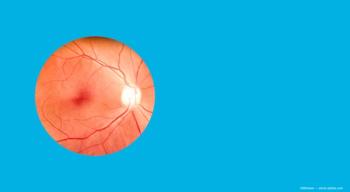
IKA 2024: Educating the public on keratoconus
Alan Glazier, OD, FAAO, talked about a session he is a moderator in that discusses the education of the public on keratoconus, from screening to diagnosis, and the roles clinicians can take to assist in the anxieties of the patients.
Alan Glazier, OD, FAAO, talked about a session he is a moderator in that discusses the education of the public on keratoconus, from screening to diagnosis, and the roles clinicians can take to assist in the anxieties of the patients.
Video Transcript:
Editor's note: The below transcript has been lightly edited for clarity.
Alan Glazier, OD, FAAO:
Hi, my name is Dr. Alan Glazier, and I'm a practicing optometrist in Rockville, Maryland, founder of FluoreSCENE Media, and "ODs on Facebook," which everybody out there knows. And our talk today, I'm moderating a panel discussing communicating with patients, and getting the message about keratoconus out to the general public and what's involved in that.
We're going to basically go over how doctors communicate well, how they don't communicate well, and what patients have said about their patient education with them, in terms of what could have been done better. And also about the general public's understanding of screening and the importance of a general eye exam in families, specifically, with a patient with a family history of keratoconus.
We feel as as clinicians, that we take good care of our patients. A lot of taking care of our patients is in their expectations, and a lot of their expectations are built around what we say in the exam room. And when we're not focused on real communication with them and understanding their feelings and their fears, then we can really come across as cold, uncaring, and maybe not the best person to care for that patient. It's our duty as clinicians to do both–not just fix their challenge or provide the best optics for them, or the best medical care. But also to understand what they're going through and be empathetic. There's a lot of fear around the diagnosis of keratoconus. The understanding is that it's a refractive condition, for us. But often they're viewing it as a medical condition, they're very worried about new news–it's usually not good when they get it. So they come in to the eye exam with a certain level of fear already. So that's a very important point as you're addressing the kerotoconic patients. Understanding that they're there, they're worried, they don't understand that they may not go blind, depending on the diagnosis, the person, the level of vision challenge they have. That's a very important thing to be aware of.
I think it's important to manage any kind of anxiety of any of our patients to begin with. And the keratoconus [patients] have a specific high level because of the fear that they won't be able to engage in the things they love to do at some point. And I think it's the most important thing is to let them know that there are great options. There are great optical options and there are great medical options.
Newsletter
Don’t miss out—get Ophthalmology Times updates on the latest clinical advancements and expert interviews, straight to your inbox.


















































.png)


